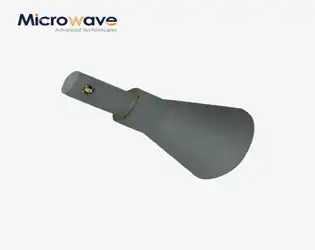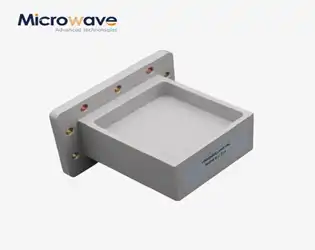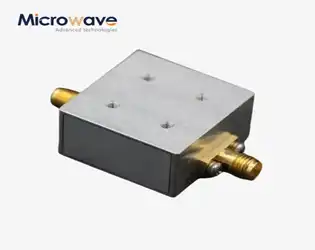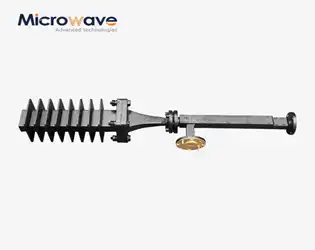BLOG

November 11, 2025
In satellite ground stations and radar installations worldwide, signal degradation from polarization misalignment costs operators thousands in lost data throughput daily. When choosing between circular and linear polarization technologies, understanding the fundamental differences between a Ladder Membrane Conical Dual Circular Polarization Horn Antenna and traditional linear solutions directly impacts system reliability, interference resistance, and long-term operational costs. This comprehensive guide breaks down critical technical distinctions that procurement teams, system engineers, and project managers must evaluate before committing to antenna infrastructure investments.
Double-Ridge Waveguide for Commercial Airlines Weather Radar Installation
November 11, 2025
Every commercial airline faces the critical challenge of navigating through severe weather conditions while maintaining passenger safety and operational efficiency. Weather radar systems are the lifeline of aviation safety, but traditional rectangular waveguides often fall short when aircraft need to accommodate both C-band and X-band frequencies in a single installation. The Double Ridge Waveguide Bend emerges as the solution to this pressing problem, enabling airlines to integrate versatile weather penetration radar systems without costly dual-waveguide installations. This article explores how double-ridge waveguide technology revolutionizes commercial aviation weather radar installations, delivering reliable signal transmission across multiple frequency bands while reducing installation complexity and maintenance overhead.
China Customized OEM Bulk Custom Waveguide to Coaxial Adapter
November 11, 2025
When your satellite communication system experiences signal degradation or your radar installation faces impedance mismatches between waveguide and coaxial transmission lines, the solution lies in precision-engineered Custom Waveguide to Coaxial Adapters. These critical components bridge the gap between different transmission media, ensuring seamless signal transition in microwave and RF systems where every decibel of insertion loss matters and every VSWR point impacts system performance.
Advantages of the Double Ridge Waveguide Design
November 10, 2025
In today's demanding microwave applications, engineers face constant challenges with signal integrity, bandwidth limitations, and size constraints in traditional waveguide systems. When your radar systems demand broader frequency coverage, your satellite communications require enhanced performance, or your defense applications need more compact solutions, the Double Ridge Waveguide emerges as the superior choice. This innovative design addresses critical pain points that have plagued conventional waveguide technology for decades, offering exceptional bandwidth extension, reduced size requirements, and improved impedance matching capabilities that make it indispensable for modern RF and microwave systems.
Coplanar Waveguide: Definition & Types
November 10, 2025
In the demanding world of high-frequency RF and microwave circuit design, signal integrity challenges can derail even the most carefully planned projects. Engineers working on 5G infrastructure, satellite communications, and advanced radar systems constantly battle signal loss, impedance mismatches, and integration complexities that threaten system performance. The cpw waveguide emerges as a powerful solution to these persistent pain points, offering a planar transmission line architecture that combines superior electromagnetic confinement with remarkable design flexibility. This comprehensive guide explores coplanar waveguide fundamentals, examines the various cpw waveguide types available today, and demonstrates how this transmission line technology addresses critical challenges in modern high-frequency applications.
What is the difference between a fixed and variable attenuator?
November 10, 2025
In high-frequency signal management scenarios, engineers consistently face a critical challenge: maintaining precise control over signal strength without introducing distortion or compromising system integrity. Whether you're calibrating a satellite ground station, optimizing radar performance, or conducting advanced microwave testing, selecting the appropriate attenuator type directly impacts measurement accuracy, system reliability, and overall operational efficiency. The fundamental distinction between fixed and variable attenuators lies in their adjustability capabilities, but understanding the nuanced differences in design architecture, application scenarios, and performance characteristics is essential for making informed procurement decisions. A Waveguide Fixed Attenuator provides predetermined, unchangeable attenuation values ideal for permanent installations requiring consistent signal reduction, while variable attenuators offer dynamic control for applications demanding real-time adjustments across varying operational conditions.
A Metasurfaced Pyramidal Horn Antenna for Circularly-Polarized Applications
November 7, 2025
When satellite communication systems demand circular polarization but your existing Pyramidal Linear Polarization Horn Antenna only provides linear polarization, you face a critical challenge: signal degradation, polarization mismatch, and reduced system efficiency. The metasurface approach to converting pyramidal horn antennas from linear to circular polarization represents a breakthrough solution that addresses these pain points without requiring complete antenna replacement. This innovative technology combines the proven reliability of traditional pyramidal horn structures with advanced metasurface polarization converters, delivering circular polarization capabilities while maintaining high gain, compact dimensions, and cost-effectiveness for aerospace, defense, and satellite communication applications.
Sealing Solutions: The Waveguide Gasket
November 7, 2025
In high-frequency waveguide systems, even microscopic signal leakage can compromise communication integrity, radar accuracy, and system performance. Engineers in satellite communications, aerospace, and defense face a critical challenge: maintaining electromagnetic compatibility while preventing interference and signal degradation. The Waveguide Anti-leak Gasket emerges as an essential solution, providing reliable sealing that preserves signal integrity, blocks external electromagnetic interference, and ensures optimal system performance across demanding applications from air traffic control to military surveillance systems.




